
Riding the Paris Métro
Traveling in Paris like a Parisian
It's easy to travel around Paris in the wonderful
Métropolitain rapid transit system.
There are 302 stations,
245 of them within the City of Paris,
so there's always one nearby.
When you reach a station, it's very likely a work of art.
Their art nouveau design is internationally famous.
And, the system is culturally influential.
People quickly started calling it "Métro" for short,
and that has become the generic term for a mostly underground
urban transit system.
The Paris Métro carries over 4 million passengers
each day, making it the second busiest system in Europe,
after the Moscow Metro,
and the tenth busiest in the world.
There is also the RER, the regional express,
which runs through the city with stations further apart.
Plus several tramway lines and the Transilien suburban trains.
And, of course, all the national railway stations are
connected to these lines.
Let's make our way around Paris with my well-used
Métro pocket map.

This is a scan of a pocket-sized Métro map, the online version has a very nice new design. But the pocket-sized paper map always works, even down in the Métro where your smart phone may not get a signal. Besides, paper maps are superior.
The first line opened in July, 1900, during the World's Fair. The entire system was operated by La Compagnie du chemin de fer métropolitain de Paris, or Le Métropolitain for short. That was soon shortened further to Métro, and now "metro" has become the international generic term for a rapid transit rail system.
The Paris Métro grew quickly until World War I, and construction restarted soon afterward. The central core of the system was complete by the 1920s, and it grew out into the suburbs during the 1930s. Now there are 214 kilometers of track, most of it underground.
The lines are numbered, and consistently colored on maps and signs in stations. The directions refer to the end station.

Typical pocket litter for exploring Paris: a Métro map, some Métro tickets, and a street map printed by a department store and available at many hotels and hostels.
Métro Stations
The stations are literally works of art. The system started operation in 1900, with the first station entrances in the then-dominant Art Nouveau style.

Later additions through the 1930s maintained that style.
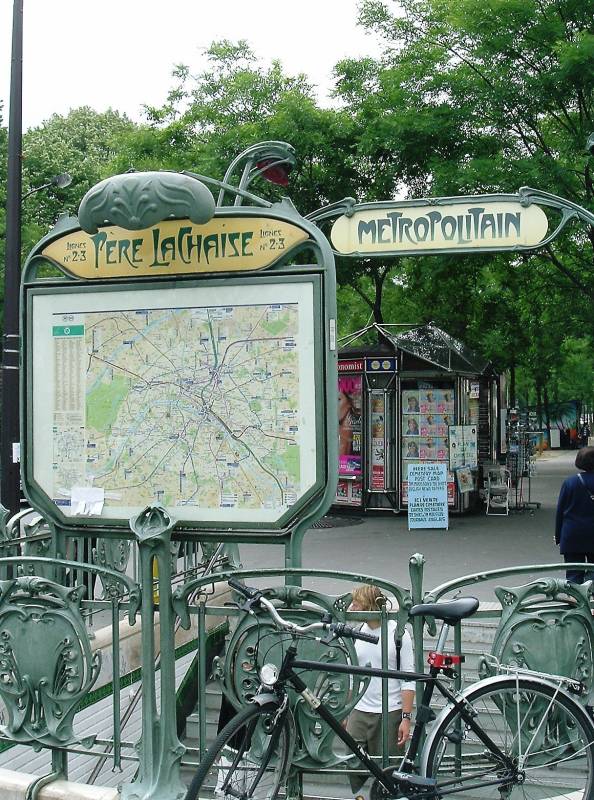
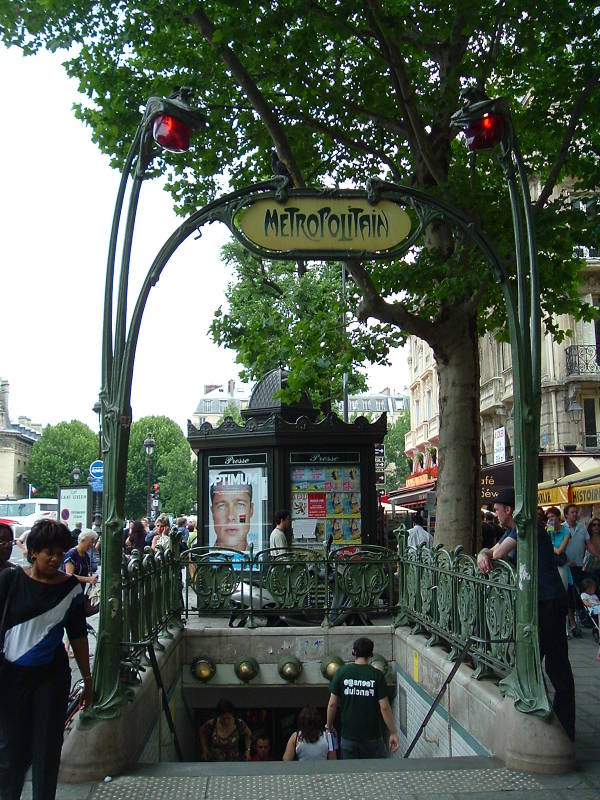
International art museums have interpreted the Paris subway entrances as art works. There is a copy in the Sculpture Garden adjacent to the National Gallery of Art in Washington, D.C. It looks like an entrance, but the three sides of railings surround a concrete patio surface — there is no staircase leading down.
Chicago has improved on that. Metra is the Chicago equivalent to the RER, a commuter rail system connecting the suburbs and beyond to downtown Chicago. One of the terminal stations is below the Art Institute of Chicago. That Chicago Metra station entrance is a replica of a Paris Métro entrance.
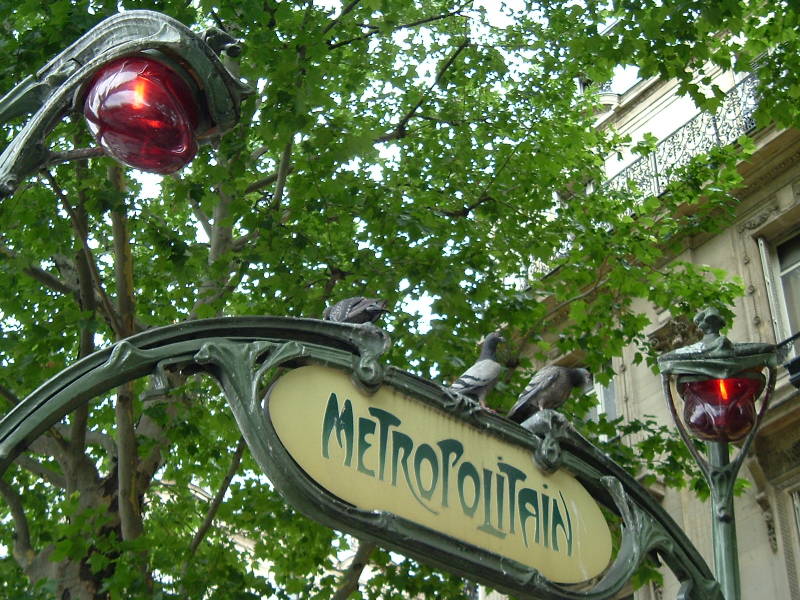
Washington D.C., on the other hand, built its metro system in the 1970s and wanted to make sure that it would always remind everyone of the architectural glories of that era. If you're a fan of decaying poured concrete, and corroded escalators that don't work because they're exposed to rain, be sure to visit it. Or read Thomas Friedman's description.
Amazon
ASIN: 0374288909
Back to France and civilization:
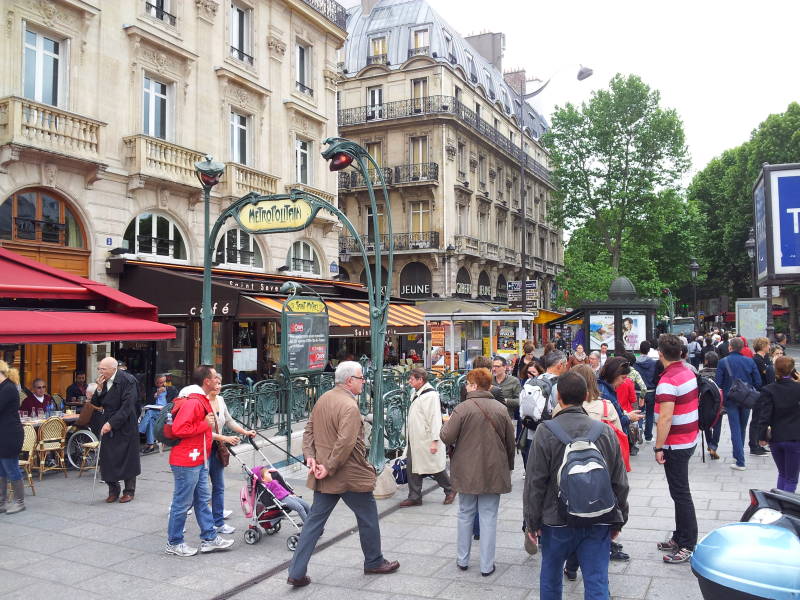

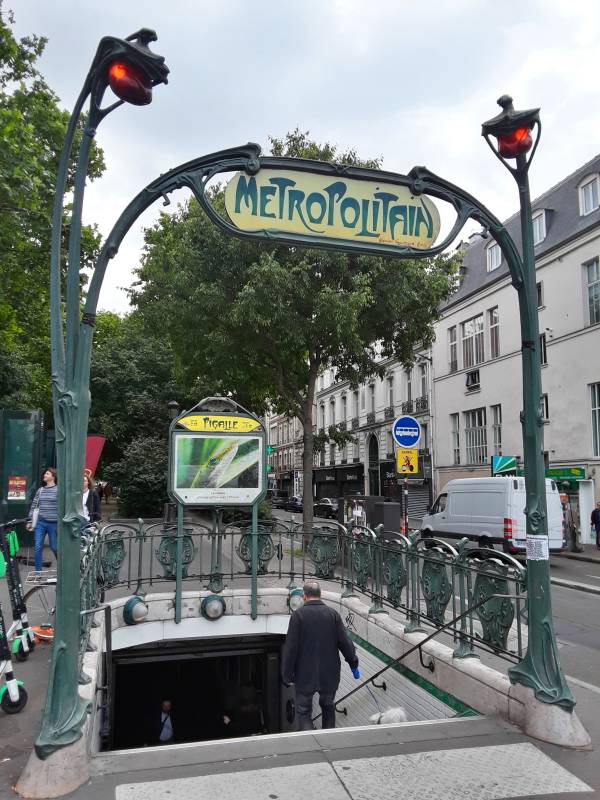
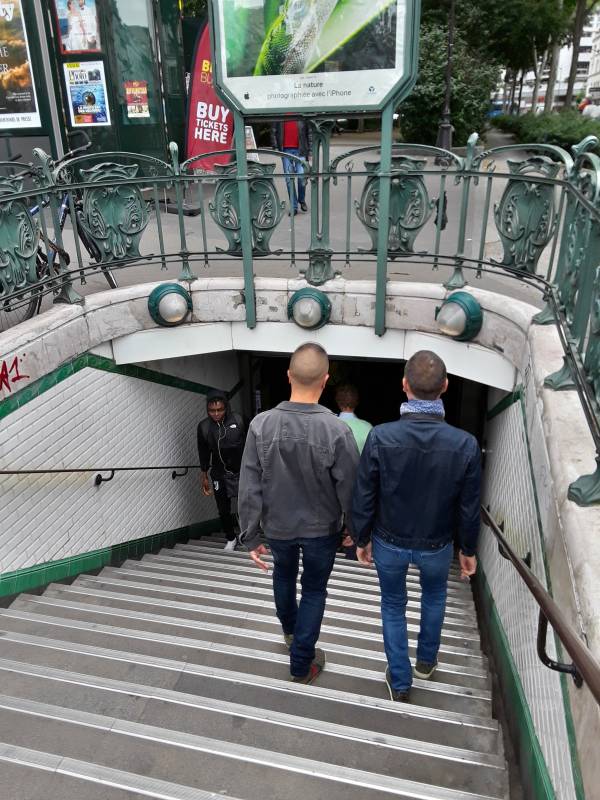
Let's enter the Métro system.
Buying Tickets
We need to get a ticket. Or, better yet, a carnet of ten tickets.
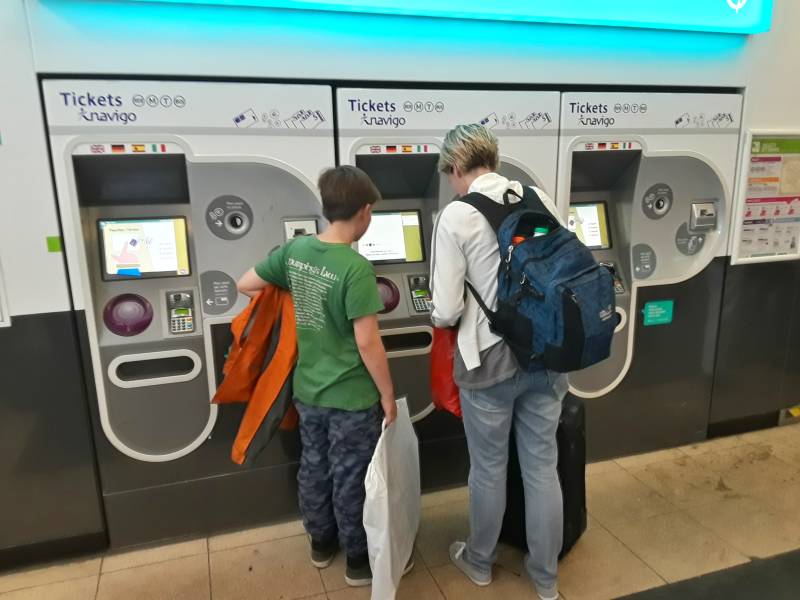
The Métro ticket system is easy to use. US credit cards have finally added chips and caught up with the rest of the world, so I can buy my own ticket.
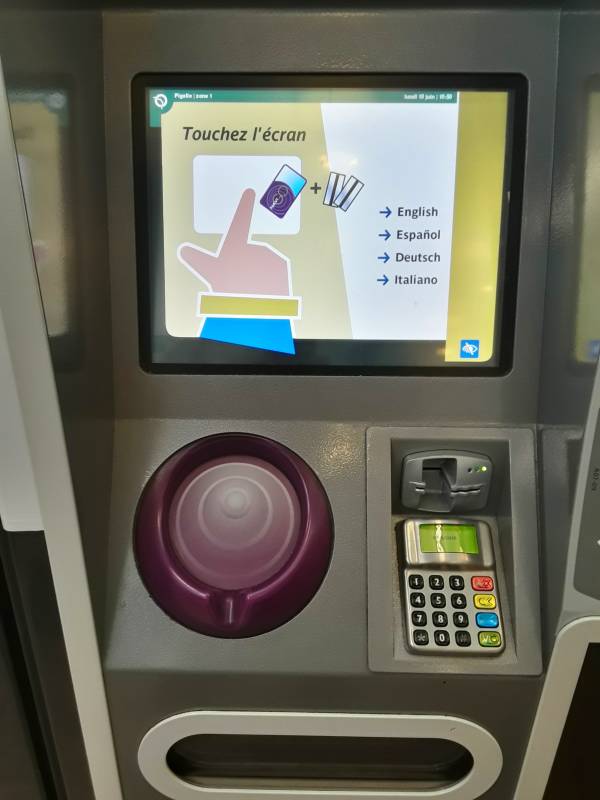

I want the "Ticket t +" individual tickets. You can get a day pass, but that only makes sense if you are taking several trips in a day, moving frequently in and out of the Métro system.
I will use the Métro to get to an area, and then explore the city by foot, above ground. Flânerie.
The Métro system is pay-per-ride — you enter and then ride as far as you would like. It's like the New York and Chicago metros. You aren't charged by distance, as you are in San Francisco and Washington D.C.
A carnet is 10 tickets for a significantly lower price.

The Métro system is operated by RATP, the Régie Autonome des Transports Parisien. RATP also operates bus services and, cooperating with the national railway SNCF, the RER regional network. You see the RATP logo, a girl's face meant to resemble the Seine's path through Paris, on tickets and vehicles.
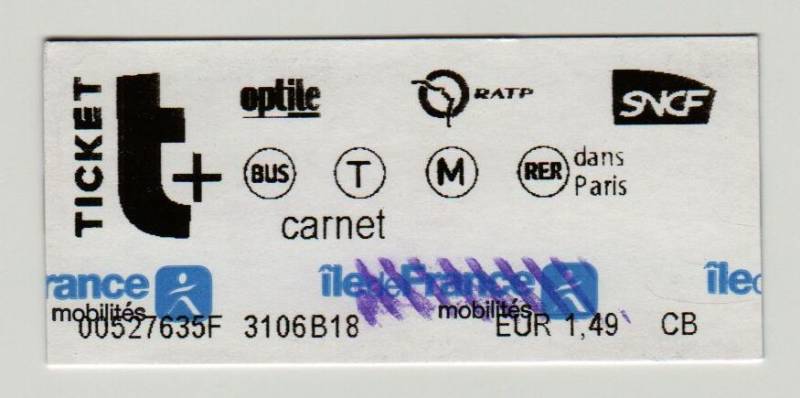
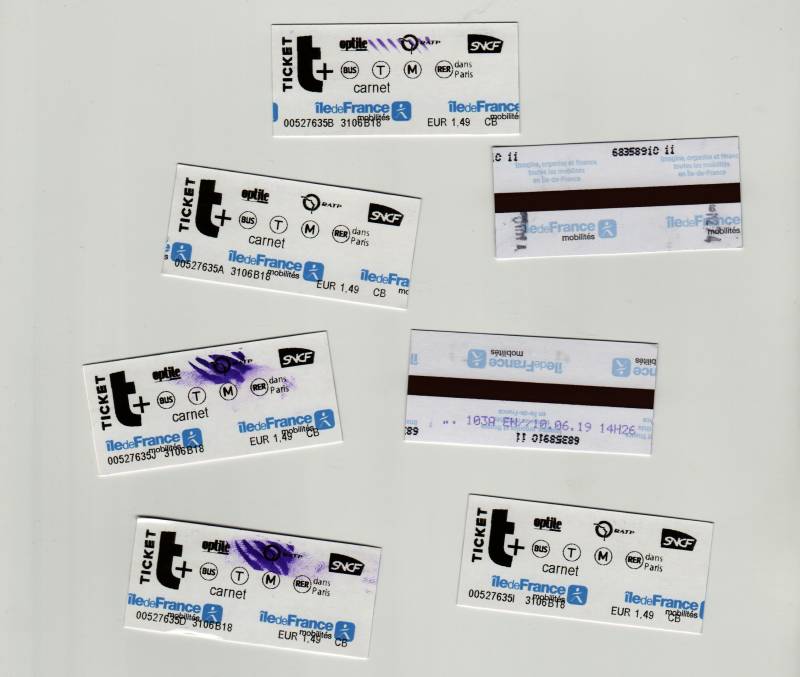
If you need to get a small folding map, or if you can't figure out the ticket machines, ask at the window.
When you're ready, feed your ticket into the turnstyle and enter the station.
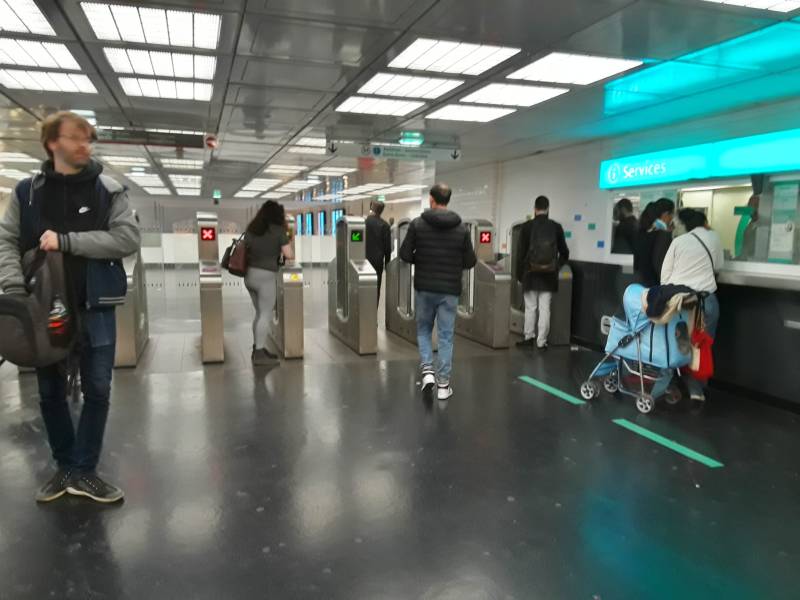
Through the Station
The system is mostly built with a single large tunnel for both tracks, with the platforms on the outsides. So, passageways split to lead to the two platforms.
I have reached the point where I have to pick a destination direction on Line #12. I'm at Pigalle. Do I want to go southeast to Mairie d'Issy, or north to Aubervilliers—Front Populaire, which seems to be in the process of having its name simplified?
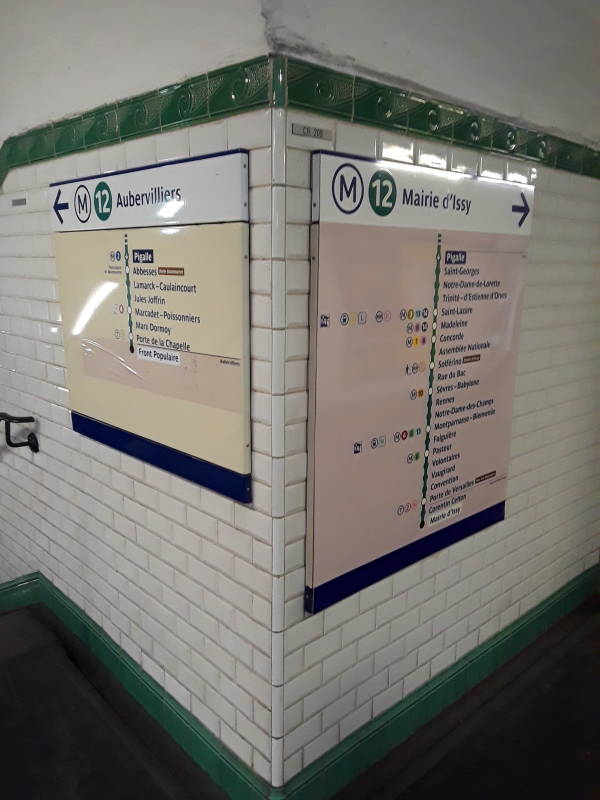
This is France, so there is art, or at least references to art.
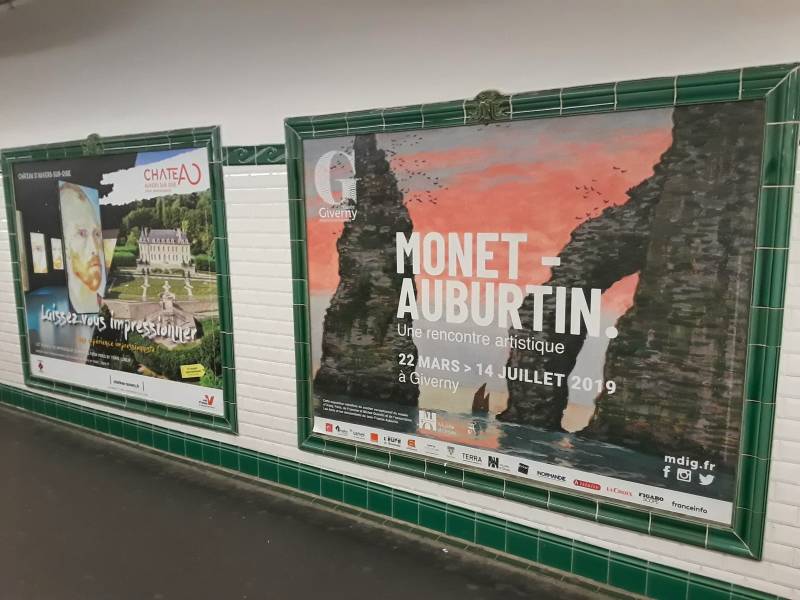
Plus other random advertising.

The system design largely dates from the early 1900s, so be ready for some stairs.
There are often, but not always, escalators to bring you up.
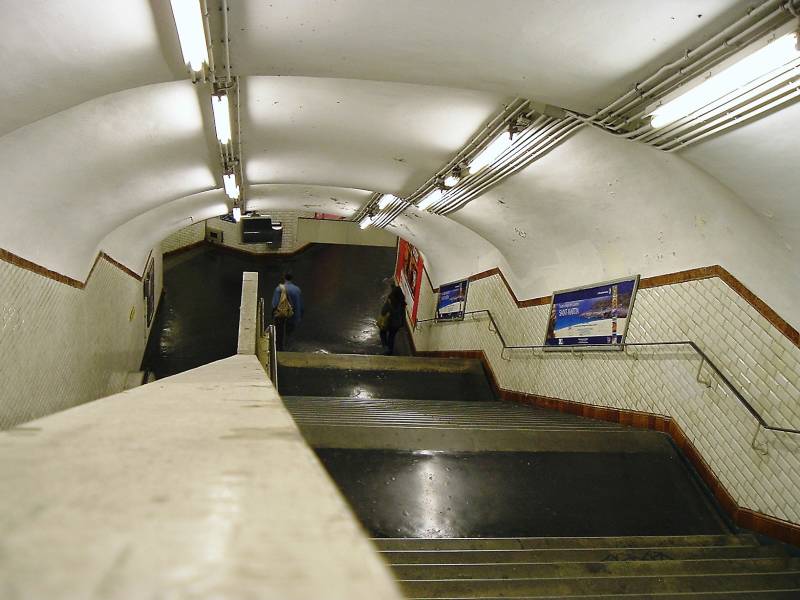
I'm headed toward Line #1. The platforms for trains in both directions are down this passageway.
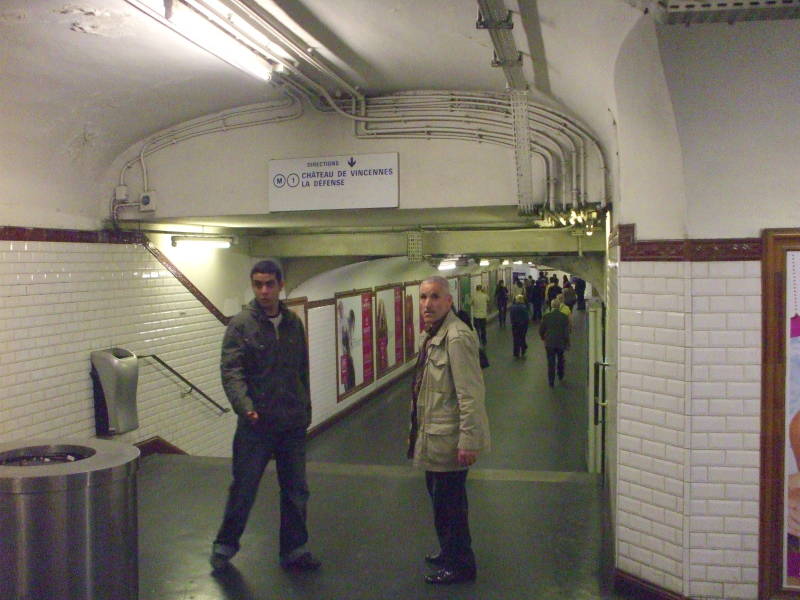
West to La Defense is straight ahead and then to the left.
For traveling east to Château de Vincennes, turn left before you reach the accordion player.
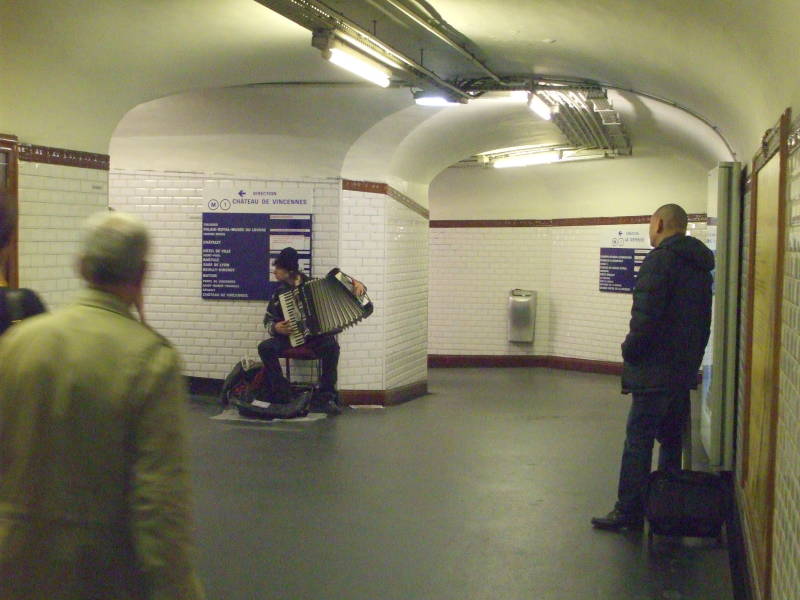
Sometimes there is an entire ensemble.
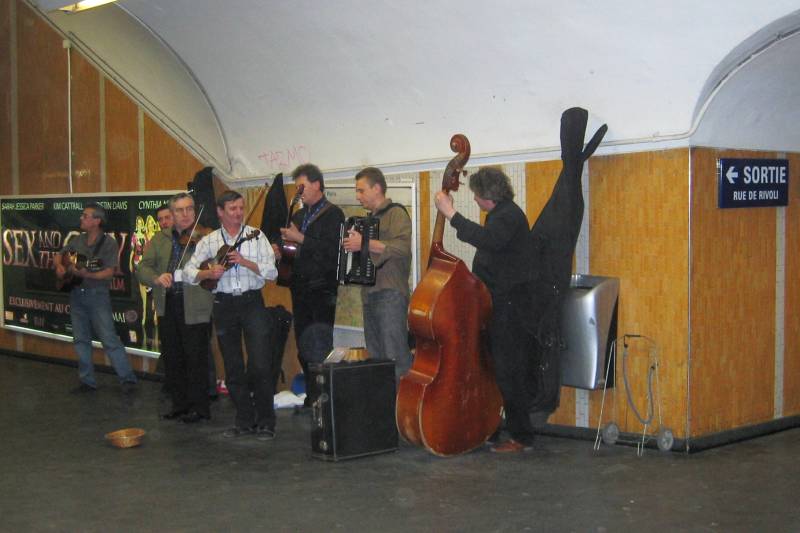
To the Platform
Electricityin France
Here comes a train. The Métro trains run on the right. They're powered by 1.5 kV DC from a third rail between the two lines.
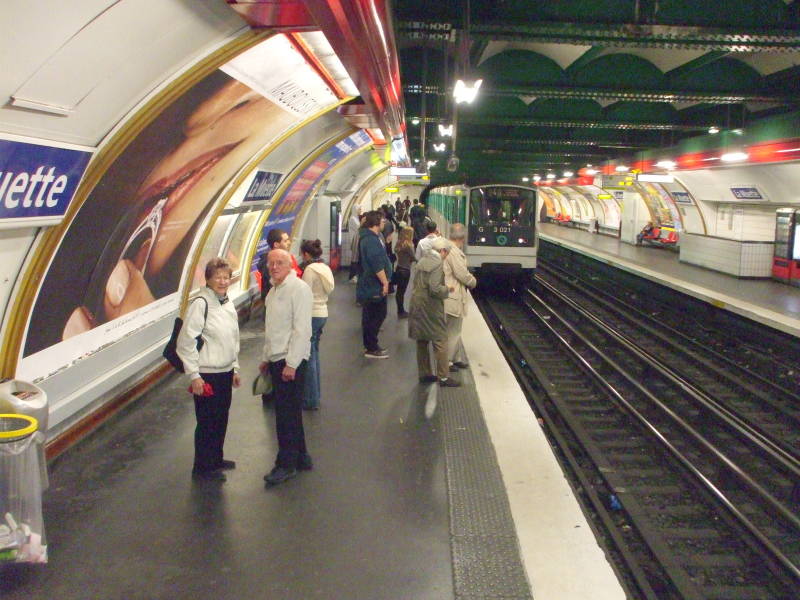

This is very different from the Washington D.C. metro system, where either the designer was insane or the construction crews had the plans upside down. The lights in the Washington D.C. metro system are all below floor level, so the stations are very dark. Bring a flashlight. The Washington station signs are not visible at most station stops, and the announcements are unintelligible, so you have to count stops to figure out where you are.
Amazon
ASIN: B07G83TQSQ
The Paris Métro is a clean, well-lighted place. It's easy to find your way around.
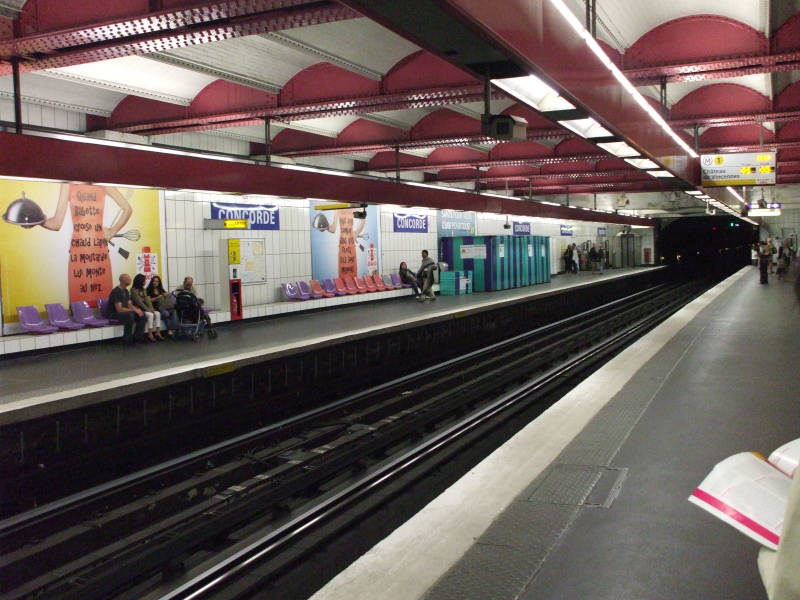
Our Train Arrives
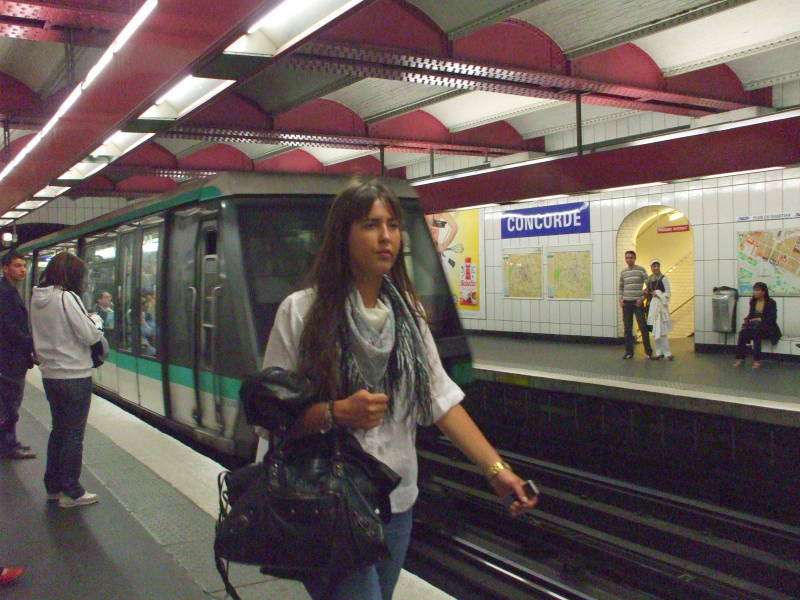
And, below, a train is leaving.



Amazon
ASIN: 1853262714
Line 14 opened in 1998, it was the first new Métro line since 1935. It was built with platform doors, which have since been added to some stations on other lines to prevent accidents, suicides, and re-enactments of Russian novels.
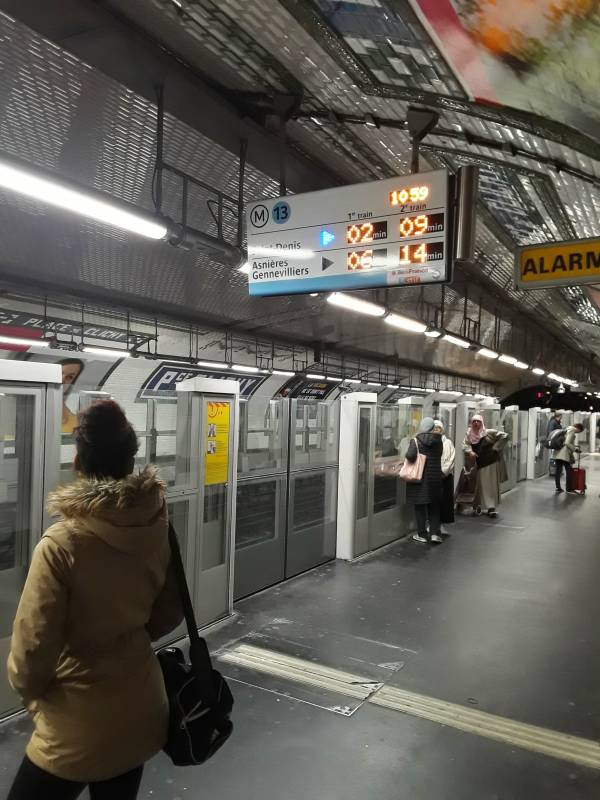
On Board

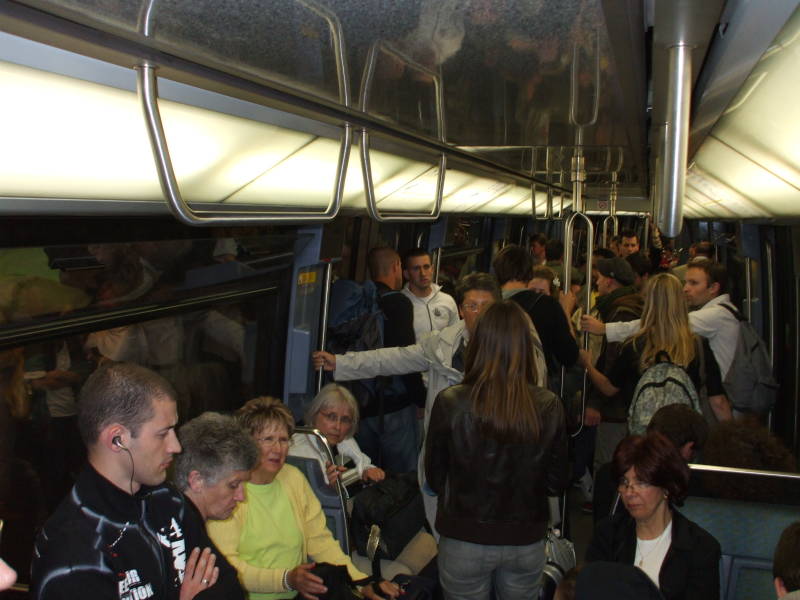
Longer Rides on the RER
While France was recovering from World War II through the late 1940s and 1950s, the Métro system reached the limits of its capacity. New trains allowed some increase in passengers carried per hour, but the short distance between stations imposes an upper limit. The population was growing, and people were moving out into the suburbs. People would take regional or suburban trains into the city, but that overloaded the main railway stations during morning and evening rush hours.
There had been a plan in the late 1800s to run suburban commuter trains into and through the center of the city, with that network's stations much further apart than the Métro system. It was time to restart that project.
In the 1960s, the RER or Réseau Express Régional project began. It's something in between the Métro with its short links between densely spaced stations, and the Transilien commuter rail serving all of the Île-de-France region surrounding Paris, the city's suburbs and beyond. The Transilien terminates at the major railway stations. The RER interconnects with those railway stations, and also with the Métro through the core of Paris.
The RER has 257 stations, 33 within the city of Paris, and 587 kilometers of track. 76.5 km of the track is underground, including almost all of the track within the city. RER lines are designated by letters, versus the Métro lines with numbers.
Here is a train at one end of RER B, preparing to leave CDG, Aéroport Charles de Gaulle. The other end of RER B is 80 kilometers away. Along the way this train will stop at Gare de Nord, a major SNCF railway station. And, it will connect to the other four RER lines; Métro Lines 1, 2, 4, 5, 6, 7, 10, 11, and 14; some Transilien lines; and tramway lines.

in France
The majority of the RER lines are on suburban SNCF track. So, the RER trains run on the left and use overhead power. The SNCF overhead power is 25 kV at 50 Hz AC.
Some of the RER equipment can run on both overhead 25 kV AC on SNCF track, and third rail 1.5 kV DC on RATP track.
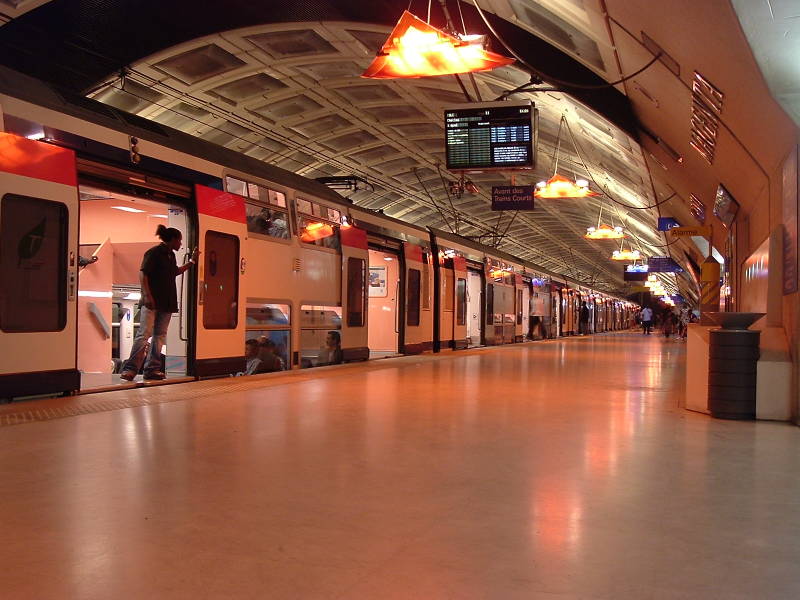
The RER system was a rapid success. RER Lines A and B exceeded traffic expectations and quickly reached the saturation point. By 1992, RER A was carrying 55,000 passengers per hour in each direction. That was the highest rate outside East Asia.
It has had some perhaps unexpected social impacts. The area around the Châtelet — Les Halles station complex, one of the largest underground stations in the world, is now quite popular with people who live out in the suburbs.
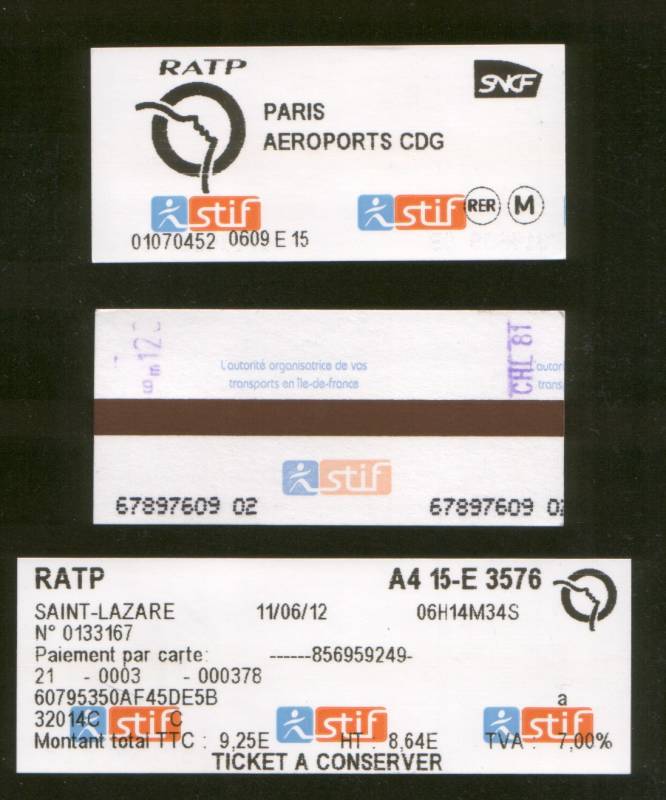
We Have Arrived
It's time to climb up and out of the station.
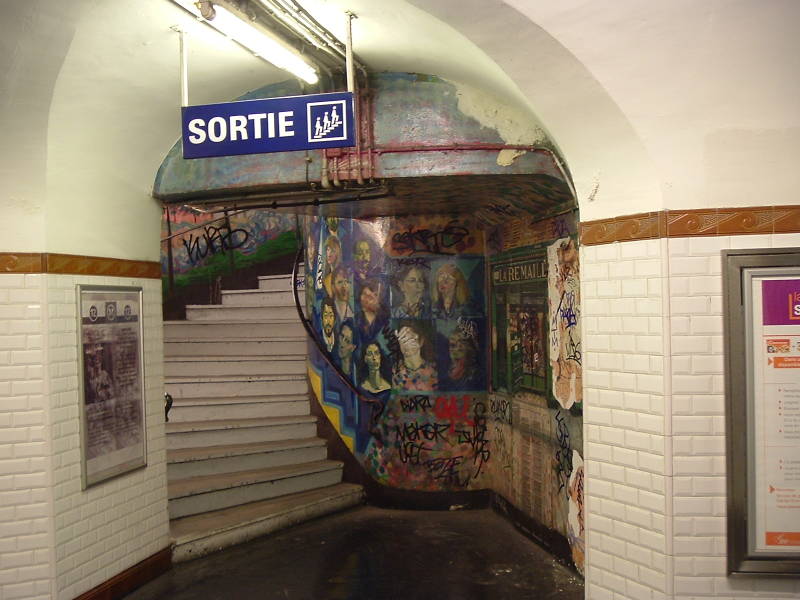
You exit some stations through solid metal panel doors.
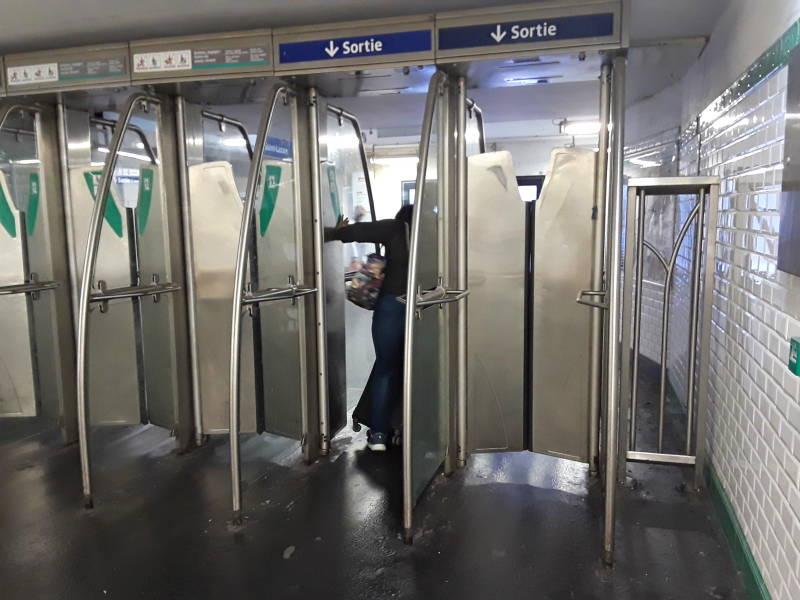
Now I'm ready for more flânerie, aimless wandering through Paris.